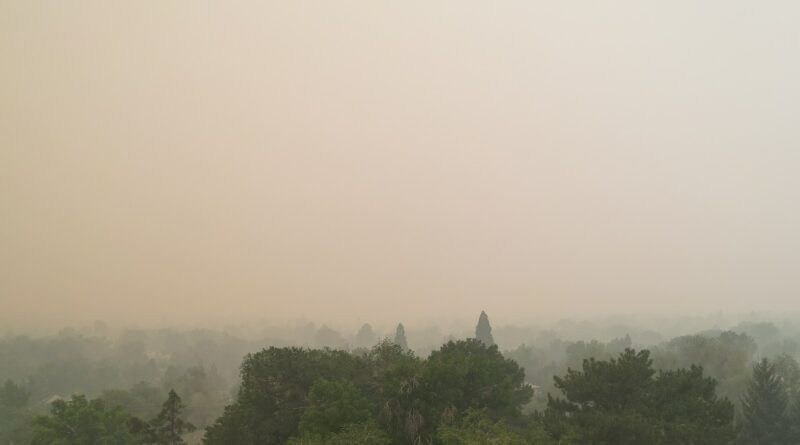
With the forest fires raging throughout the country and the winds blowing the smoke to distant areas, more regions have become affected by the polluted air. Smoke from wildfire can contain irritant gases and particulates that, when inhaled, can travel deep into the lungs and can also spread through the circulation. These small, fine particles, called PM2.5, can cause difficulty breathing, asthma attacks and other , as well as potentiate inflammation, and is associate with premature mortality and morbidity, heart attacks, and strokes.
Daily sources of PM2.5
PM2.5 is named as such because these particles are equal to or less than 2.5 μm in aerodynamic diameter. Indoors, these particles are generated by activities such as smoking indoors, cleaning, fireplaces, and cooking. Outdoors, they can be generated by motor vehicles, power plants, industrial facilities. These are normally avoided or reduced by using a stove top fan when cooking, not using cigarettes indoors, and using better exhaust fans and filters. It has been shown to that reduction in PM2.5 is of benefit to especially sensitive individuals.
Assessing air quality
How do you know if there is a high amount of particulate matter in the air? Even though these particles are small, once there are a considerable amount in the air, the air begins to look hazy and reduces visibility. The sky may also be of a strange color. People who may be more easily affected by this pollution may also begin to develop a rash, be congested, start coughing, or have irritated eyes.
However, air quality can be more easily assessed based on standardized measurements made by atmospheric monitors that measure what is called the Air Quality Index (AQI). The higher the AQI is, the greater the level of pollution and the higher the risk of health problems.
The ideal AQI is until 50. When it is between 50 to 100, the air quality is still considered acceptable, but people who have respiratory diseases should take more caution. Between an AQI of 101 to 150, even individuals with other medical issues must avoid going outdoors or wear a mask when outside.
At an AQI between 151 to 200, most people will begin to notice minor irritation of the eyes, nose, and throat. At this level of air quality, more sensitive individuals need to watch for serious symptoms, such as chest tightness or heaviness, dizziness, nausea, or confusion. The health risks are increased for everyone at an AQI between 201 to 300 and, above 300, everyone will likely experience some side-effect from smoke exposure.
Protect yourself from poor air quality
Given the risk of exposure to these fine particulate matter, avoidance of any exposure is the best way to stay healthy. It is best to stay indoors, especially if the AQI hits 150, or even if it is only between 51 to 100, especially if you have any lung or cardiovascular comorbidities. This may be more likely to be true in the elderly population, who are also more likely to have been diagnosed with respiratory illnesses such as chronic obstructive pulmonary disease (COPD) or emphysema, or cardiovascular/cerebrovascular disease such as hypertension, previous heart attack, stroke, and coronary artery disease.
Here are other great tips that can minimize the risk of exposure to PM2.5. This advice is especially helpful today, given the recent onslaught of forest fires. This way, you can ensure that the air where you are is as free of PM2.5 as possible.
- Check for leakage in windows and doors and try to seal them, even temporarily with a damp towel.
- Should you have an air conditioner, run it so that its accompanying air filter can also work.
- You can also buy an air purifier or air filter to best improve your indoor air quality. Air purifiers also usually have a sensor that can detect and monitor the quality of air in your home. Should you decide to buy one, make sure that it can sufficiently cover the surface area you need. If you can’t buy one, you can at least make a DIY box fan air filter with supplies from a home or hardware store.
- When driving, use the recirculate button so that the air from outside doesn’t go in.
- Should you need to go out, make sure to wear a well-fit N95 mask to prevent inhaling the particles. Unfortunately, because of the size of these particles, a simple surgical mask will not be able to protect you.
- Stay hydrated to keep yourself comfortable. If the smell of smoke bothers you, can can use some essential oils to mask the smell.
- Avoid adding to indoor pollution by avoiding the use of fireplaces, gas stoves, and even vacuuming.
- Should any of the symptoms be intolerable or worsen, please consult your physician to arrange for a checkup.
- Keep abreast of the news and updates on air quality, in case it worsens and orders for evacuation are given.
Here to help
These can be stressful times, and having to stay indoors can induce cabin fever. Strive to reduce anxiety by keeping busy and active, even indoors, and be assured that the air quality will slowly improve over time.
Do you need a companion to care for you while you have to stay indoors? Reach out to us, and we will be there to assist you according to your needs.



